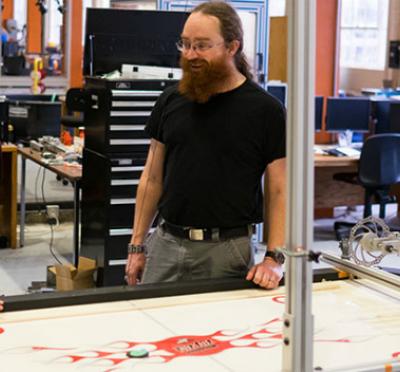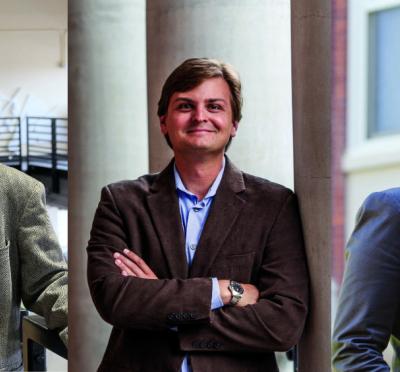
Ross Hatton
317 Graf Hall Corvallis
Corvallis, OR 97331
United States
Ross L. Hatton is an associate professor of Robotics and Mechanical Engineering at Oregon State University, where he directs the Laboratory for Robotics and Applied Mechanics (LRAM). He received his Ph.D. and M.S. degrees from Carnegie Mellon University and an SB from the Massachusetts Institute of Technology. His research focuses on understanding the fundamental mechanics of locomotion and sensory perception, making advances in mathematical theory accessible to an engineering audience, and on finding abstractions that facilitate human control of unconventional locomotors. Hatton’s research group also works with local industry to transfer modern developments in robotics from the lab to the factory or into commercial production. Dr. Hatton is a 2017 recipient of an NSF CAREER Award.
Research Interest:
Dr. Hatton's research interests lie at the intersection of robotics, mechanics, and biology. His work includes motion models for snakes and snake robots and development of fundamental mathematical tools for the study of locomotion.
Personal Research Site: rosslhatton.com
Selected Publications:
- Nonconservativity and Noncommutativity in Locomotion
Ross L. Hatton and Howie Choset. European Physical Journal Special Topics: Dynamics of Animal Systems, 224, 3141–3174, 2015. - Geometric Swimming at Low and High Reynolds Numbers
Ross L. Hatton and Howie Choset. IEEE Transactions on Robotics, 29, 615–624, 2013. - Mechanical Antagonism in Legged Robots
Andy Abate, Jonathan W. Hurst, and Ross L. Hatton. Proceedings of the Robotics: Science and Systems Conference, 1–8, 2016. - Why the seahorse tail is square
Michael M. Porter, Dominique Adriaens, Ross L. Hatton, Marc A. Meyers, and Joanna McKittrick. Science, 349, 2015. - Sidewinding with minimal slip: snake and robot ascent of sandy slopes
Hamidreza Marvi, Chaohui Gong, Nick Gravish, Henry Astley, Matthew Travers, Ross L. Hatton, Joseph R. Mendelson III, Howie Choset, David L. Hu, and Daniel I. Goldman. Science, 346, 224–229, 2014.

